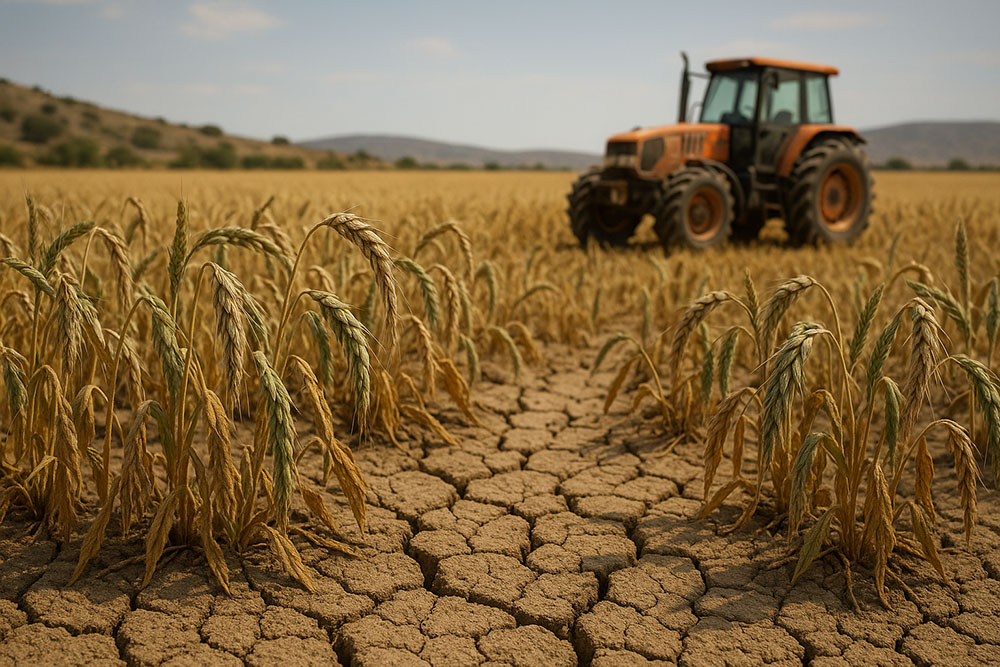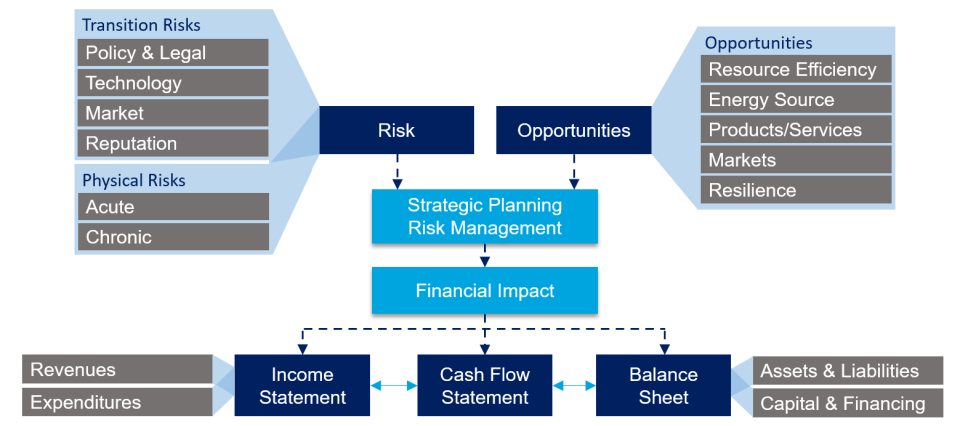Assess Your Climate Risks and Opportunities
Whether you’re a small company or a global corporation, you need to understand climate risk: the degree to which your business’s ability to survive and thrive is impacted by consequences like supply chain disruptions, growing costs for materials and services, and even changing customer behaviors. At ClimateHound, we’re committed to helping businesses understand their specific climate risks—and embrace their unique climate opportunities.
Climate Risk and Opportunity Assessment Tailored to Your Business
To get started understanding and managing your company’s climate risk and opportunities, ClimateHound recommends conducting a qualitative climate risk and opportunity assessment, which will give you insights into the priorities for your business.

Aligned to TCFD
Most organizations as well as climate-related standards and regulations lean on the The Task Force on Climate-related Financial Disclosures (TCFD) framework. TCFD is a helpful departure point to start thinking about climate risk as it considers multiple kinds of climate risks that can impact revenue, expenditures, assets, liabilities, and capital/financing.
Physical Risks
Physical risks from climate change include events like flooding and drought.
Transition Risks
Transition risks include changing customer preferences towards more environmentally-friendly options as well as regulation related to packaging and reporting.
Built for the Food & Beverage Industry
The TCFD framework is a helpful departure point to start thinking about climate risk, but every industry has unique challenges and exposures.
For the food and beverage industry—the focus of ClimateHound’s unique platform—disasters that impact the agricultural sector can dramatically affect the availability and cost of, for example, the grains or water that are essential in brewing and distilling. As Hurricane Helene showed us in Asheville, North Carolina, where ClimateHound got its start, businesses can be closed for weeks or months when facilities and utilities are wiped out by a storm. That’s climate risk hitting home for the food and beverage industry.

Regulatory Reporting and Informed Decisions
Whether you're driven by regulatory requirements or savvy to make informed business decisions that future-proof your company, ClimateHound's climate risk and opportunity assessment provides the insights you need to get started.
Comply with regulatory requirements
California SB-261 "Greenhouse gases: climate-related financial risk" requires larger companies that do business in the state to report their climate risks and related management aligned to the TCFD framework. Many states are following suite.
Manage Risks, Benefit from Opportunities
Knowing your company's specific climate risks can help you prepare for an uncertain future. Working with ClimateHound can also reveal climate opportunities that can give your business a competitive edge.

Future-Proof Your Business Today
Contact ClimateHound and take the first step in understanding and managing your climate risks and opportunities.

FAQs
Discover answers to common questions about climate risk and how we can assist your team.
If you haven’t already completed a carbon footprint, now is also the time to get started! Quantified GHG emissions are one of the eleven TCFD-recommended disclosures, and they are also required by California regulation (more states may follow).
Just as a publicly traded company must disclose other aspects of its business health and its exposure to risk so that investors can make informed decisions, climate risk is seen as an increasingly important disclosure to understand a company’s long-term viability.
The Task Force on Climate-related Financial Disclosures (TCFD) framework was developed by an international task force in 2017 to understand the different ways in which organizations will be impacted financially by global warming and how to be transparent about these impacts. More than 4,000 organizations, 70 industries, and 100 jurisdictions around the world use TCFD.


